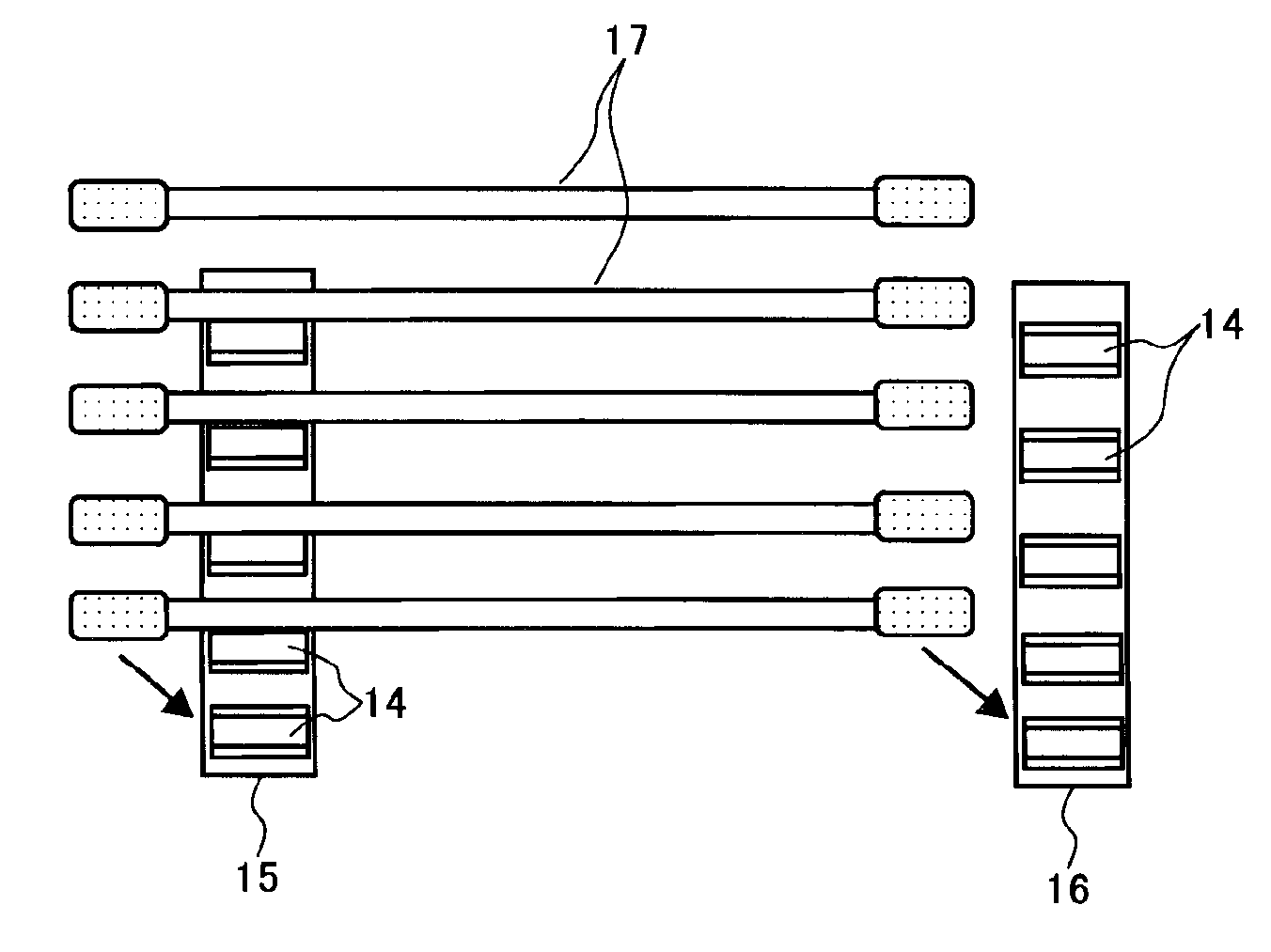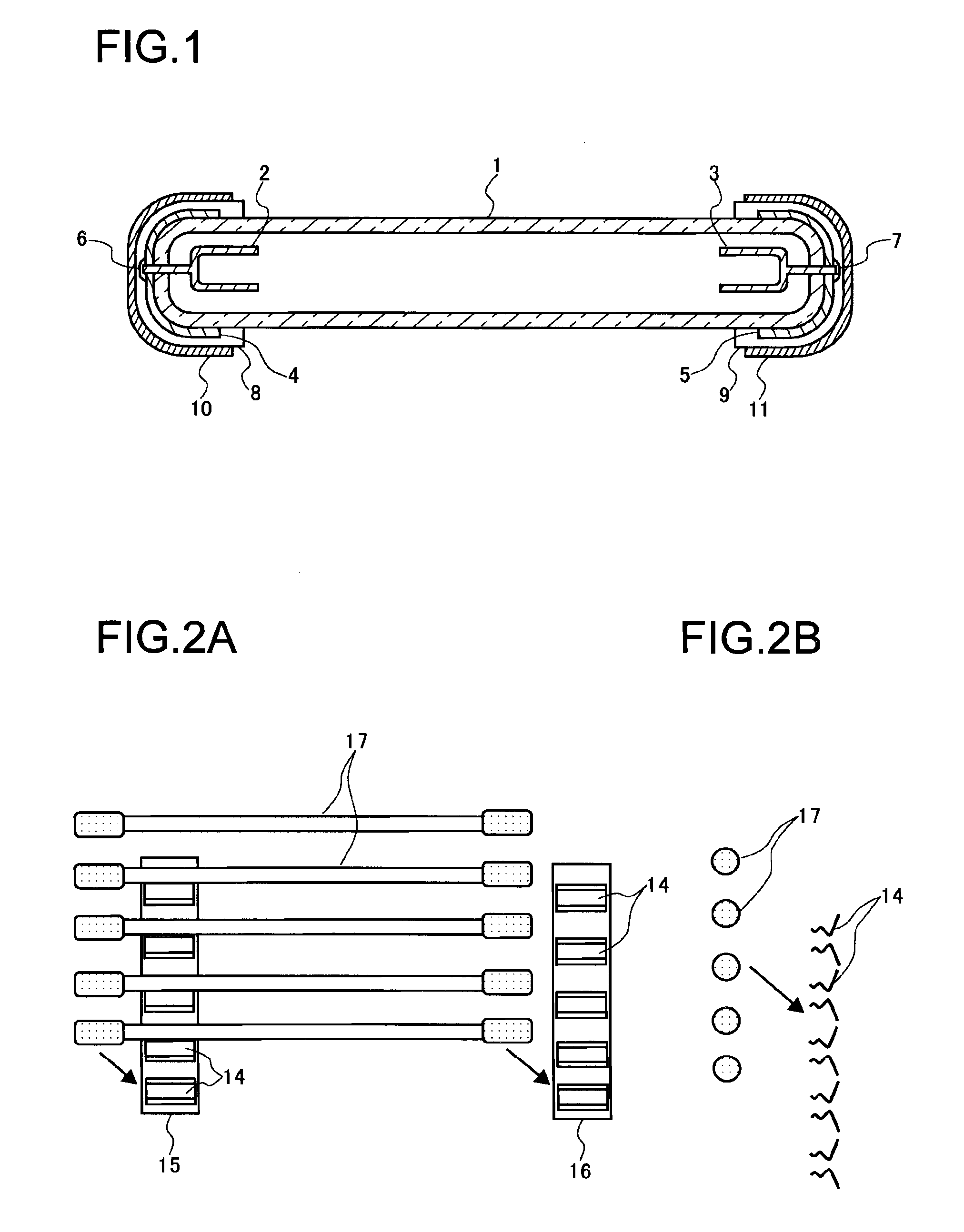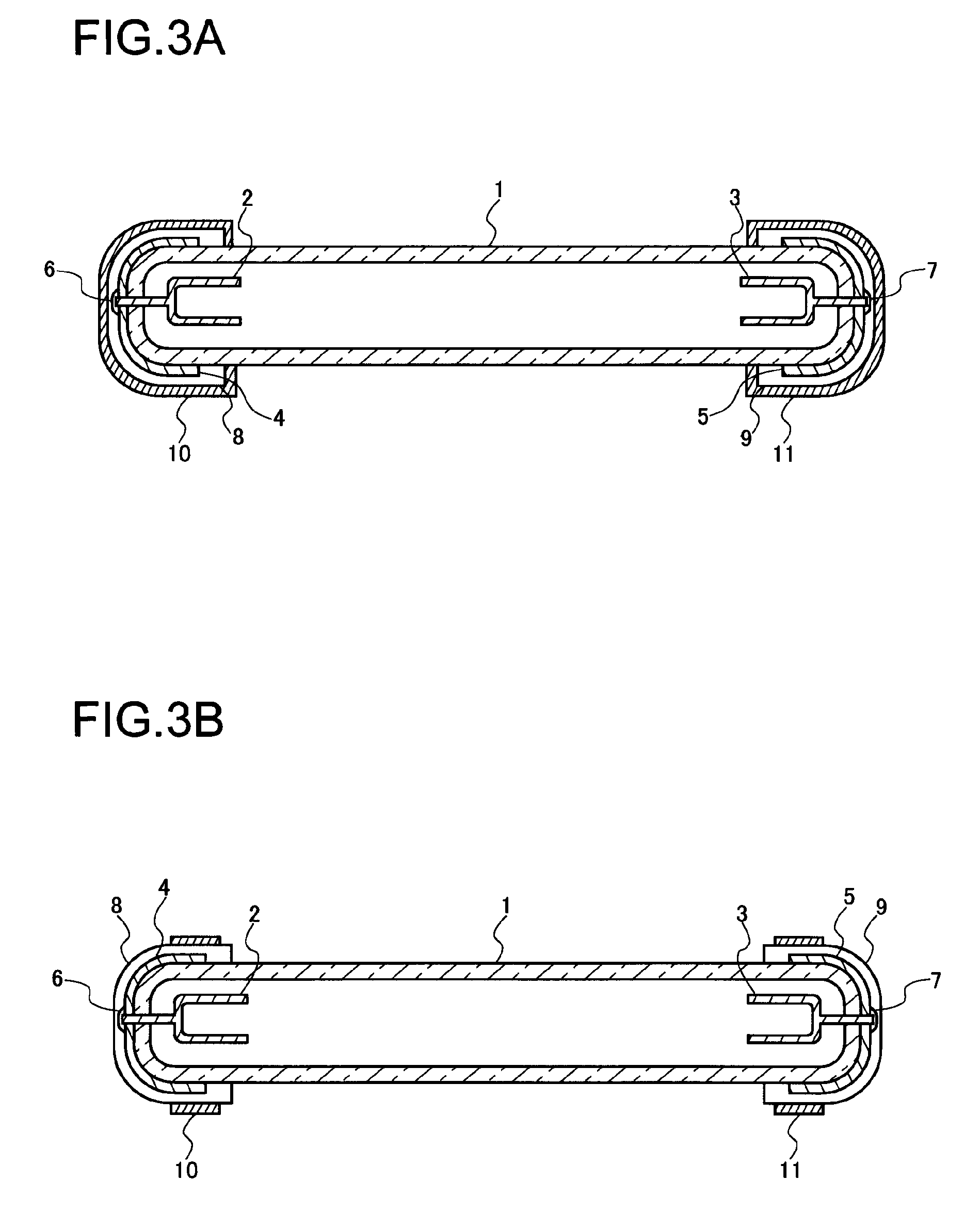Cold-cathode lamp, and display illumination device and display device therewith
- Summary
- Abstract
- Description
- Claims
- Application Information
AI Technical Summary
Benefits of technology
Problems solved by technology
Method used
Image
Examples
Embodiment Construction
[0078]Hereinafter, preferred embodiments of the present invention will be described with reference to the accompanying drawings. In a cold-cathode lamp according to a preferred embodiment of the present invention, its internal structure (including what is sealed in) does not involve any feature unique to the present invention, allowing application of various known technologies directed to cold-cathode lamps; in this respect, therefore, no detailed description will be given.
[0079]A schematic sectional view of a cold-cathode lamp according to a preferred embodiment of the present invention is shown in FIG. 1. In FIG. 1, such parts as find their counterparts in FIG. 14 are identified by common reference signs and their detailed description will not be repeated. In the cold-cathode lamp shown in FIG. 1, as compared with the conventional cold-cathode lamp shown in FIG. 14, external electrodes 4 and 5 are provided one at each end of the glass tube 1; the lead-out part of the internal elec...
PUM
 Login to View More
Login to View More Abstract
Description
Claims
Application Information
 Login to View More
Login to View More - R&D
- Intellectual Property
- Life Sciences
- Materials
- Tech Scout
- Unparalleled Data Quality
- Higher Quality Content
- 60% Fewer Hallucinations
Browse by: Latest US Patents, China's latest patents, Technical Efficacy Thesaurus, Application Domain, Technology Topic, Popular Technical Reports.
© 2025 PatSnap. All rights reserved.Legal|Privacy policy|Modern Slavery Act Transparency Statement|Sitemap|About US| Contact US: help@patsnap.com



